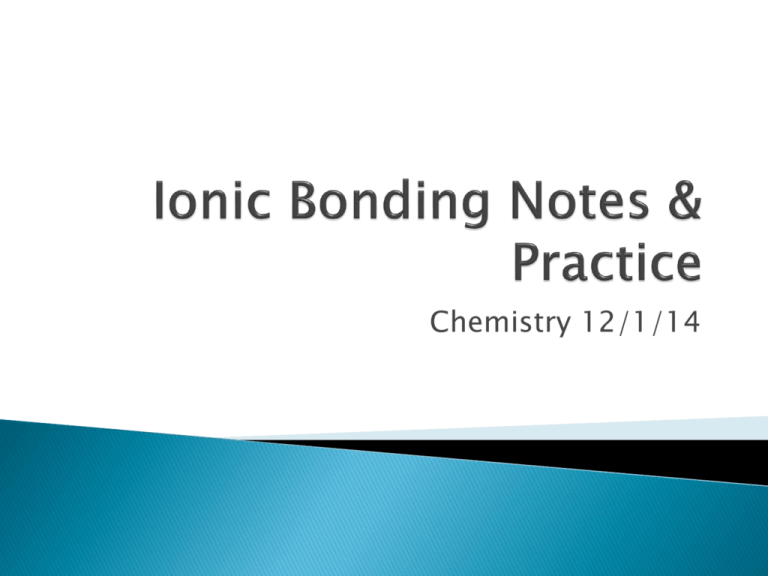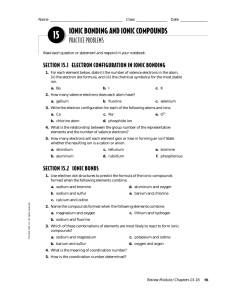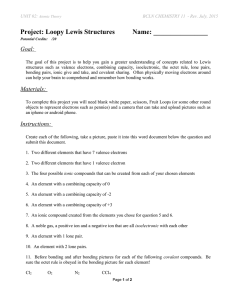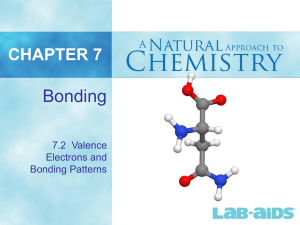Ionic Bonding Notes & Practice
advertisement

Chemistry 12/1/14 Fill out Valence Electron Practice on the notes sheet. HW: ◦ Finish pg. 1, Bonding Practice ◦ pg. 3 #15-22 IWBAT ◦ Create and name a structure for ionic compounds Drill Ionic Bonding Notes Ionic Bonding Practice Closure Paired valence electrons ◦ ◦ ◦ ◦ Relatively stable Resistant to change Don’t form chemical bonds Called nonbonding pairs or lone pairs. Unpaired valence electrons ◦ Have a strong tendency to participate in chemical bonding Atoms gain or lose valence electrons until the valence shell is filled or empty; Since valence shells are made of “s” and “p” sublevels, they can hold a maximum of 8 electrons (or 2 electrons for the 1st energy level) occurs when the less electronegative element (metal) transfers one or more valence electrons to the more electronegative element (nonmetal) the metal loses electrons to become a cation (a positively charged ion) while the nonmetal gains an electron to become an anion ( a negatively charged ion) Transfer of valence electrons Formed by a Metal & Nonmetal ion ◦ ex. NaCl The smallest unit of the compound is a formula unit. Properties of ionic compounds: ◦ Crystalline solids at room temperature ◦ Conduct electric current in molten state, but not solid state (ions not free to move) ◦ High melting and boiling points ◦ Usually water-soluble. Mobile ions in solution conduct electricity -- electrolytes Use Lewis Structures to show ionic bonding: ◦ Ms. Bloedorn will demonstrate with pg. 1 – Bonding Practice The charge of any compound MUST be ZERO!! Criss-Cross Basics ◦ Cross the numbers and drop the charges ◦ Don’t write “1” ◦ Reduce the ratio – 2:2 1:1, 2:4 1:2 Naming basics – Name the CATION, then ANION Mg and F form a compound. ◦ What is the formula? ◦ Draw the Lewis structure. ◦ Name it!







